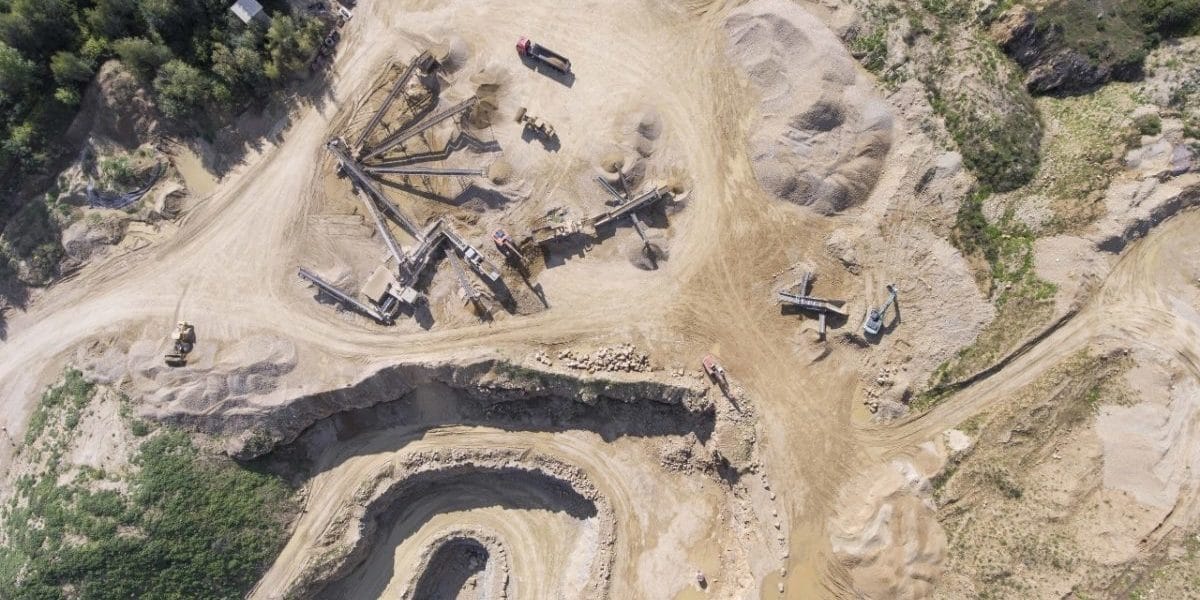Imagine This:
You’re a geologist at a mining company, and you’ve just finished updating your company’s geological model with new drilling results. You now need to pass this model to the mining engineers, so they can redesign a section of the mine. The mining engineers use a different software program than you do though, as it’s an industry standard to use different specialized programs for each part of the mining lifecycle.
However, your software programs are proprietary and not interoperable – meaning they don’t easily share information. They each have a unique file format. Your company has created a custom script to convert from one software to another, so you spend hours running the script and checking the data. You’re wary to run any new software updates, as it could change the file structure and render your script useless. You also have to meticulously check the file to make sure it’s converted correctly – because once the file was corrupted and haul trucks were sent to the wrong location, which was both dangerous and costly.
Instead of being able to focus on your work, you’re losing time every day converting and re-importing files for different programs. Since mining is iterative, you pass files back and forth with other geologists and engineers often. Every time they send you their data, they have to follow this same time-consuming process as well.
Introducing the Open Mining Format
If you currently work in the mining industry, this scenario will sound very familiar to you. If you don’t, this workflow may sound like a headache – but it’s the current norm in mining for data exchange. Every day users need to move data between their applications, but until now, they were lacking a way to easily and effectively do it.
The Global Mining Standards & Guidelines Group (GMSG) is spearheading a solution to this challenge – by developing the open mining format (OMF). The GMSG focuses on facilitating collaborative solutions across the mining industry, with working groups focused on topics like autonomous mining and underground battery electric vehicles. Their Data Exchange for Mine Software working group is focused on developing the OMF – an open standard created to help mining companies move data seamlessly through their software programs.
Editor’s Note: The GMSG has released a report by the Data Exchange for Mine Software group, outlining some of the current challenges associated with data exchange.
Innovation and collaboration are a core belief of Seequent, and we have supported the GMSG in their development of the OMF as a collaborator member. Next month, Ignacio (Nacho) Torresi, Regional Director for Latin America at ARANZ Geo, will present the OMF at the GMSG Collaboration Towards Future Mining conference in Santiago. This month, Adam Pidlisecky, Chief Research Officer, presented the OMF at their conference in Edmonton.
What’s an Open Standard?
An open standard is a format or protocol that is freely and publicly available. These standards are developed and maintained through a collaborative process and constantly evolve based on industry feedback. Open standards can be used by anyone with no associated cost, so you will always be able to access your data. Some famous examples of successful open standards are HTML & CSS for web design, PNG for image files, Shapefile for GIS, and SEG-Y for geophysical data. Please keep in mind that using an open standard does not mean your data is publicly available.
How Does OMF Work?
OMF provides a common file format (.omf) for mining software, and allows files to be easily imported or exported between programs. It’s specifically designed to represent spatial objects, such as drillholes, block models and surfaces. OMF is highly flexible, as objects are defined by their geometry (points, lines, surfaces, etc.) and data (assays, lithology, etc.) is added to give the geometry meaning.
For example, surface geometry with added elevation data generates a topographical surface. This flexibility means that any type of geospatial object can be created in OMF, and that data can be accessed and processed separately from the geometry.
The OMF standard is a work-in-progress that is constantly being updated based on industry feedback. If you have any questions about OMF, or want to share your stories of data exchange, please contact Jennifer Curran at the GMSG.
How to Contribute and Learn More About OMF
Any company can freely use and contribute to OMF. If you’d like to learn more about OMF, you can access the OMF Python library. If you’d like to contribute or make suggestions to the current OMF code, please visit the GMSG github.





